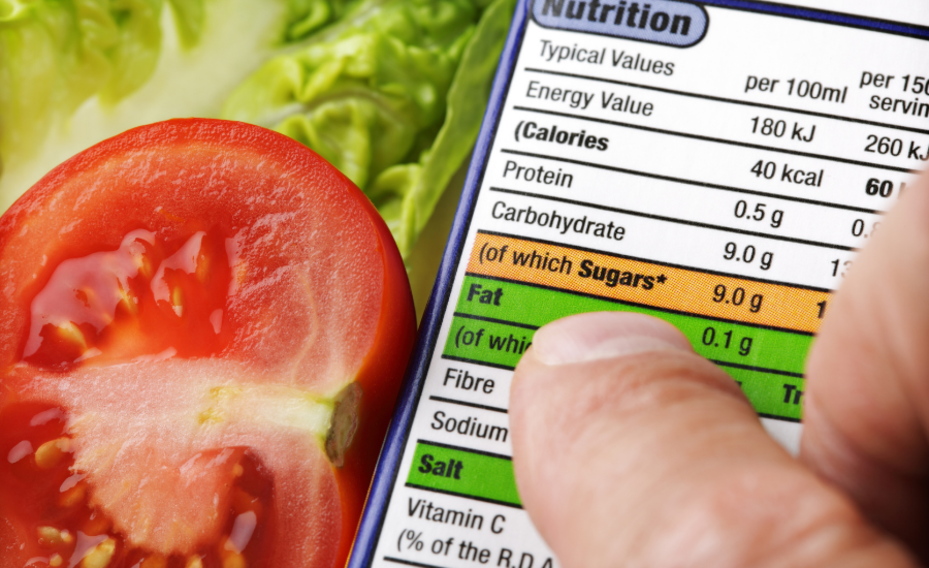An Introduction To Food Labels
Food labels should help us understand the nutritional content of foods and drinks to enable us to make individual choices and plan our meals and shopping list. However, sometimes these labels use terms or data that can confuse us if some basic concepts are not known. Below we detail some key aspects of food labeling that are important when managing diabetes.
Carbohydrates
Carbohydrates are the food group that have the most effect on blood glucose levels. When selecting a food, look on the label ofr the grams of total carbohydrates, not just grams of sugar or ‘of which sugars’. Remember that all carbohydrates, increase blood glucose. If you focus on the sugar content only, you could miss out on other sources of carbohydrate that would have an impact on your glucose levels such as those found occurring naturally in foods e.g. milk and fruit and starch carbohydrates that are rich in fibre e.g. bread, potatoes, pasta and cereals
Sugar Free versus No Added Sugar
Products that are labelled sugar free usually have artificial sweeteners in replacement of sugars such as sucrose or glucose. Artificial Sweeteners will have no impact or a lesser impact of blood glucose levels than sugar. It is important to remember that sugar free does not mean carbohydrate-free. A product may be low in sugar but still very high in other carbohydrates.
Foods that have been labelled as ‘no added sugar’ means that the product has not had any sugar added by the manufacturer. However, the food itself may have naturally occurring sugars which would influence blood sugar levels. For example, a carton of orange juice may have a no added sugar label, so the manufacturer has not added any sugar to the product. However, the carton of orange juice would still contain natural sugars from the oranges.
When you choose between standard products and their sugar-free equivalents, compare food labels. If the sugar-free product has fewer carbohydrates, the sugar-free product might be the best option. But if there is little difference in grams of carbohydrate between the two foods, let the taste or price decide.
Fats
In general, experts recommend choosing the healthier fats, polyunsaturated and monounsaturated fats instead of the saturated fats where possible. All fats contain twice as many calories per gram compared with protein or carbohydrate so if you're trying to lose weight focus on reducing the total amount and frequency of all fats you consume.
Reduced fat or fat-free foods may seem like just what you need but do take a look at the label. These foods can have more carbohydrates and just as many calories as the standard version of the same food if the fat has been replaced with sugar or another carbohydrate source.
Two more tips.
Pay attention to portion sizes. The portion sizes on food labels may differ from the portion sizes in your diet.
Take into account the calories you should eat each day. The same goes for the daily value on food labels. This percentage, based on a 2,000-calorie daily diet, helps you calculate how much of a nutrient is in one serving of food compared to recommendations for the whole day.
How to interpret data and understanding key terms of food labels is an essential skill. You can use this information to really think about the food you eat and how it affects your body, so you can manage your diabetes more effectively.
References:
1. American Diabetes Association. Taking a closer look at labels. https://www.diabetes.org. 2019 Available at: http://www.diabetes.org/food-and-fitness/food/what-can-i-eat/taking-a-closer-look-at-labels.html. [Accessed August 2020].
2. Ellis E. The Basics of the Nutrition Facts Label. Academy of Nutrition and Dietetics. https://www.eatright.org/. 2020. Available at: http://www.eatright.org/resource/food/nutrition/nutrition-facts-and-food-labels/the-basics-of-the-nutrition-facts-panel . [Accessed August 2020].
3. American Diabetes Association. Get to Know Carbs. https://www.diabetes.org. 2019. Available at: https://www.diabetes.org/nutrition/understanding-carbs/get-to-know-carbs. [Accessed August 2020].
